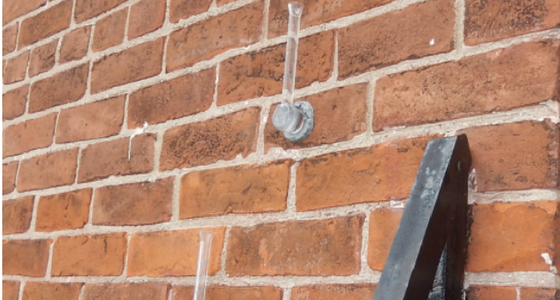Water repellents are colorless treatments that are applied to walls or other surfaces with the intent of reducing absorption. Applying a water repellent can be a great way to enhance the weather resistant characteristics of your structure. It is relatively inexpensive and somewhat simple to apply, but there are several things to take into consideration prior to proceeding with a project.
Most important is understanding the type of substrate and selecting the proper material that will achieve the desired effect, without causing damage to the substrate or to surrounding elements such as windows or vegetation.
Selecting the right material
There are several types of water repellents available, and there are numerous advantages and disadvantages to each. It is important to consider several factors when selecting the material, some of which are listed below:
What is the substrate? (e.g.: brick, concrete, limestone, granite, sandstone, EIFS, etc.)
Is the material compatible with the substrate?
Does the material chemically react with the substrate or does it reside on the surface?
What is the life span of the material and when does it need to be reapplied?
Does the material leave a film or a glossy appearance?
Will the material damage adjacent materials such as windows and doors?
What is the water vapor transmission rate of the material and will the water repellent significantly reduce this?
What is the solids content and active content of the material?
Does the material comply with local VOC and environmental regulations?
Testing the effectiveness
Prior to applying the selected water repellent, a sample application should always be performed over the prepared substrate. The intent is to determine the application method, the required coverage rate, and the expected reduction in absorption. The material should be applied per the manufacturer’s recommendations and then tested utilizing the common RILEM Tube Test Method. (Pictured above.)
The results of the test should be compared to those of an untreated area. If the reduction meets the design criteria, then the project can proceed. In some cases, the untreated area has a low rate of absorption and does not need a water repellent. In others, the substrate is so absorbent that a water repellent alone cannot reduce the absorption enough to meet the design criteria. In these situations, it is often best to look to alternative methods of mitigating the absorption rate. It is extremely important to test, test, and test.
Application considerations
After testing and sampling has determined that the project can proceed, there are a few important factors to consider before applying the water repellent:
At what coverage rate did the tests indicate that the material must be applied?
Is the substrate newly constructed or has recent work been completed? If so, has it had sufficient time to cure?
Has the substrate been properly repaired? (i.e.: repointing, re-caulking, etc.)
Has the substrate been cleaned to remove dirt, biological growth, carbon, and other loose contaminants?
Are the weather conditions acceptable by the material manufacturer?
Does the substrate have an acceptable moisture absorption rate according to the material manufacturer?
Has the contractor provided proof in writing that they are approved to apply the material?
Is there a written program for the application method and process?
If you are considering applying a water repellent coating on your building, please do not hesitate to call us at 419-339-3906 for more information.


